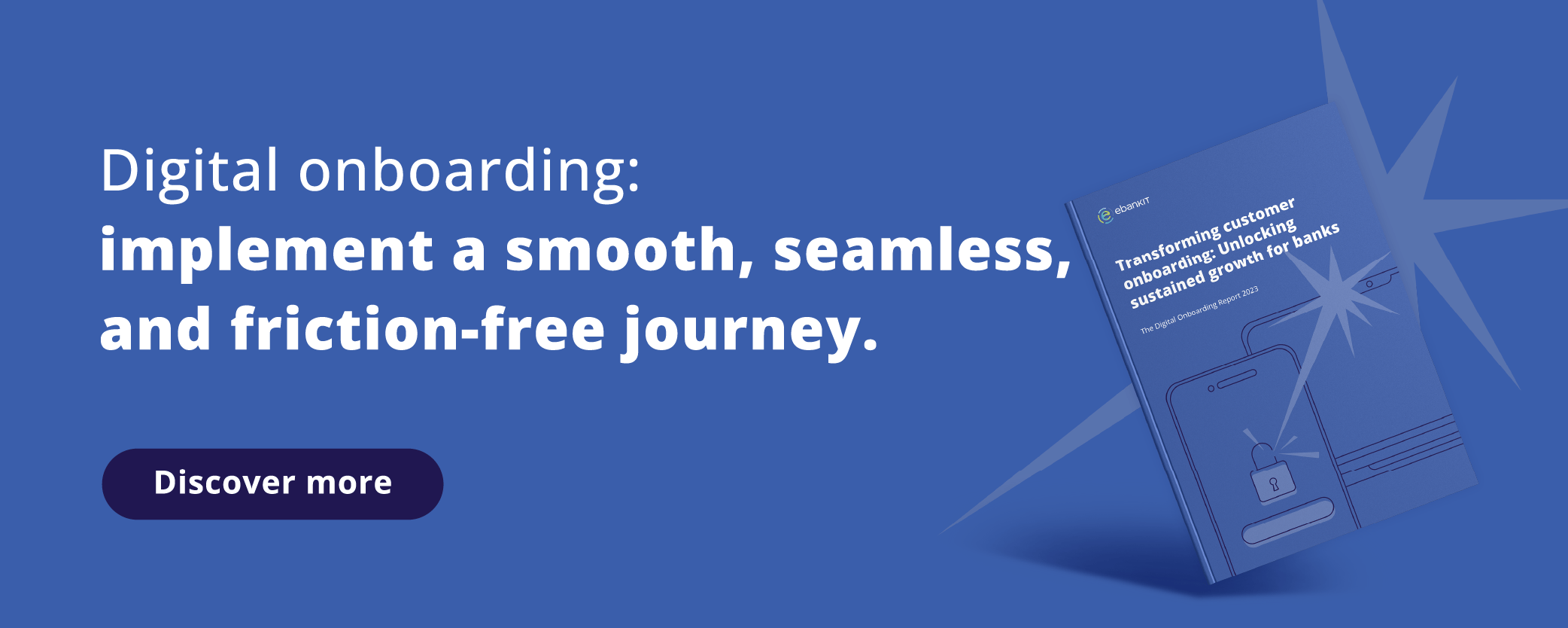Enhancing digital onboarding in banks with a more personal connection
As banking customers continue to prioritize convenience when accessing financial services, the need for a more personal connection remains strong. While digital platforms have revolutionized our interactions with banks, it is crucial to strike the right balance between digital efficiency and human interaction when a client begins their digital onboarding journey.
To meet the evolving needs of clients, banks can leverage humanized digital technology, with chatbots taking on an increasingly significant role in customer-facing operations. By combining this technology with easy access to human support through chat or voice calls, banks can improve the onboarding process and reduce customer abandonment.
1. Streamline KYC
During the account opening process, the due diligence of know-your-customer (KYC) can often pose a significant challenge. Delays at this stage are usually a result of preventable errors and internal system issues. When a client submits their identification, they anticipate a prompt verification process.
By implementing robust and automated KYC processes, along with advanced technology for fast and accurate ID verification, banks can significantly decrease the likelihood of customer abandonment and establish a positive start to their relationship. When the KYC and ID verification processes are seamless and hassle-free, customers are far more inclined to complete the onboarding process successfully.
Utilizing biometric authentication methods, such as fingerprint recognition, facial recognition, and voice analysis, not only enhances security but also streamlines the onboarding process. When authentication becomes as simple as scanning a fingerprint or undergoing a voice recognition process, customers are more likely to complete the journey, and abandonment rates decrease. Additionally, e-signatures offer the convenience of signing documents from anywhere, at any time, expediting the process even further.
2. Bring a human touch to digital Onboarding
By incorporating cutting-edge biometric technology, electronic signatures, and artificial intelligence into the onboarding process, a deep sense of trust, familiarity, and simplicity can be established.
AI can engage customers in natural language conversations, address their queries, and guide them through the onboarding journey. The key is to make sure that AI doesn’t feel like a machine but rather evokes a helpful human presence (and can connect customers to a staff member if needed).
Electronic signatures allow customers to express their intentions in a way that feels familiar and personal, mimicking the experience of signing a document by hand. It creates a sense of trust and comfort for customers throughout the onboarding process.
Simultaneously, leveraging data analytics and personalization guarantees that each customer embarks on their financial journey with a uniquely meaningful experience, where they can set up their account and customize it as they wish. When these elements are combined, they result in a superior onboarding process tailored specifically for the digital age.
3. Reduce manual work
By automating manual data entry processes, banks can eliminate the potential for mistakes that can slow down or halt the onboarding process. Additionally, automating these processes reduces the risk of customer abandonment, as customers are less likely to drop off when they are not burdened with excessive manual work.
According to Deloitte, the cost for banks to onboard a new commercial client can reach up to $30,000. By automating these processes, banks can save costs by eliminating the need to hire staff for manual work, allowing existing employees to focus on more complex tasks.
Institutions that automate processes can reduce their costs by 50%.
- Deloitte, 2023
4. Automate analog processes
Traditional practices like visiting a physical branch, mailing identity documents, or physically signing a document are outdated methods that were once accepted by customers. However, in today’s digital world, these analog processes quickly become deal-breakers for customers seeking convenience and efficiency.
Customers desire the convenience of completing all tasks seamlessly in one continuous omnichannel journey, accessible from their mobile devices or any other devices they may use. As digital consumers, they have become accustomed to the effortless experiences provided by industry leaders like Apple, Paypal, Facebook, and other prominent technology companies now making their way into the financial services sector.
Customers now expect opening a bank account or arranging lines of credit to be as effortless as creating an account on Facebook. They no longer want to be inconvenienced by visiting a physical branch. Banks that understand this and minimize or eliminate the need for in-person interactions will not only experience lower abandonment rates but will also be better equipped to compete with big tech companies in the financial services sector.






%20without%20SAM%20-%20Maturity%20Level%20-%202-KO%20edit.webp?width=160&height=57&name=67768-ebankIT%20Platform%20-%20CMMI%20Development%20V2.0%20(CMMI-DEV)%20without%20SAM%20-%20Maturity%20Level%20-%202-KO%20edit.webp)
